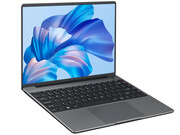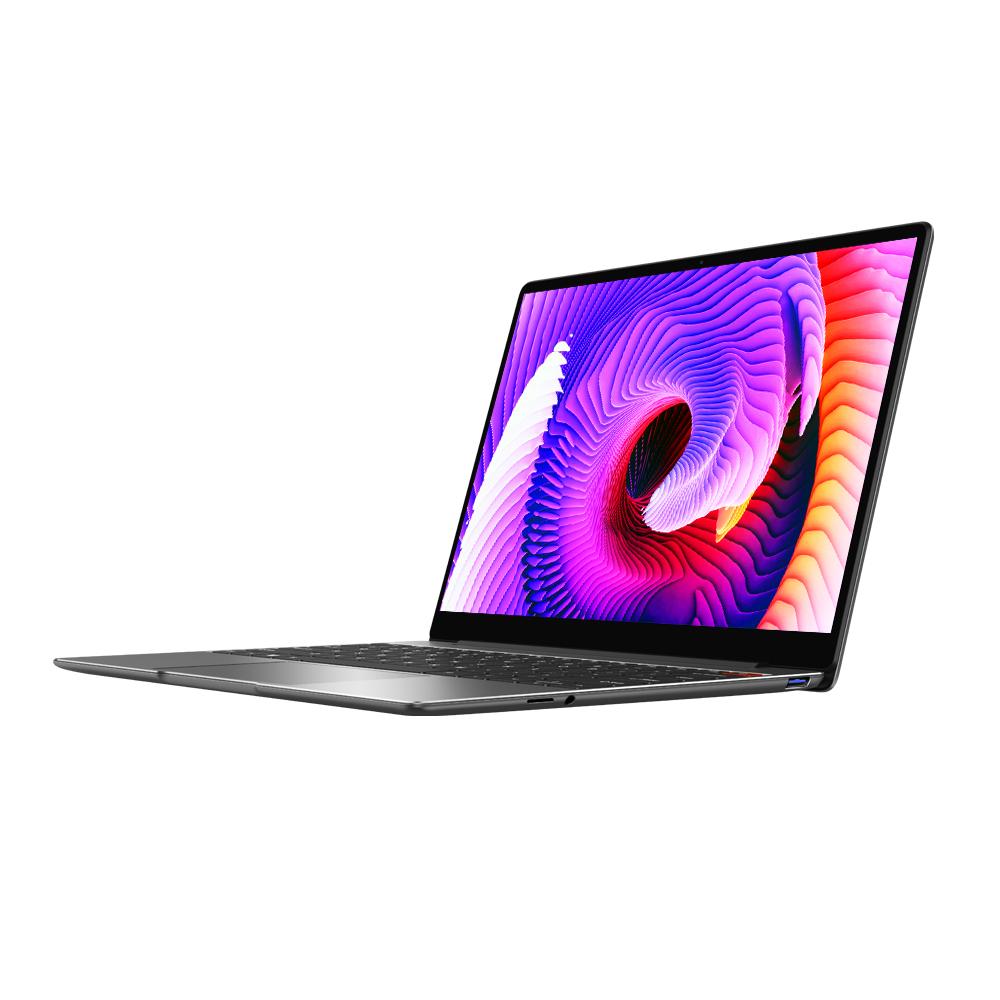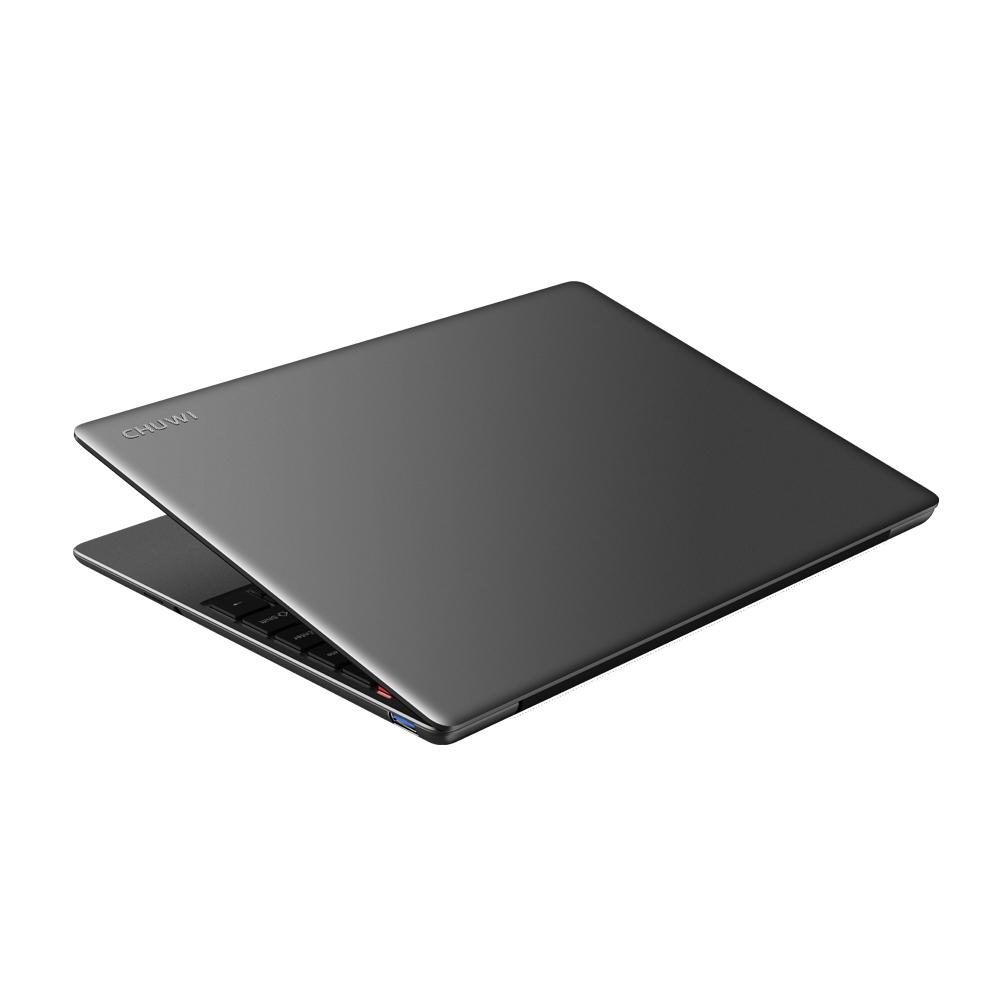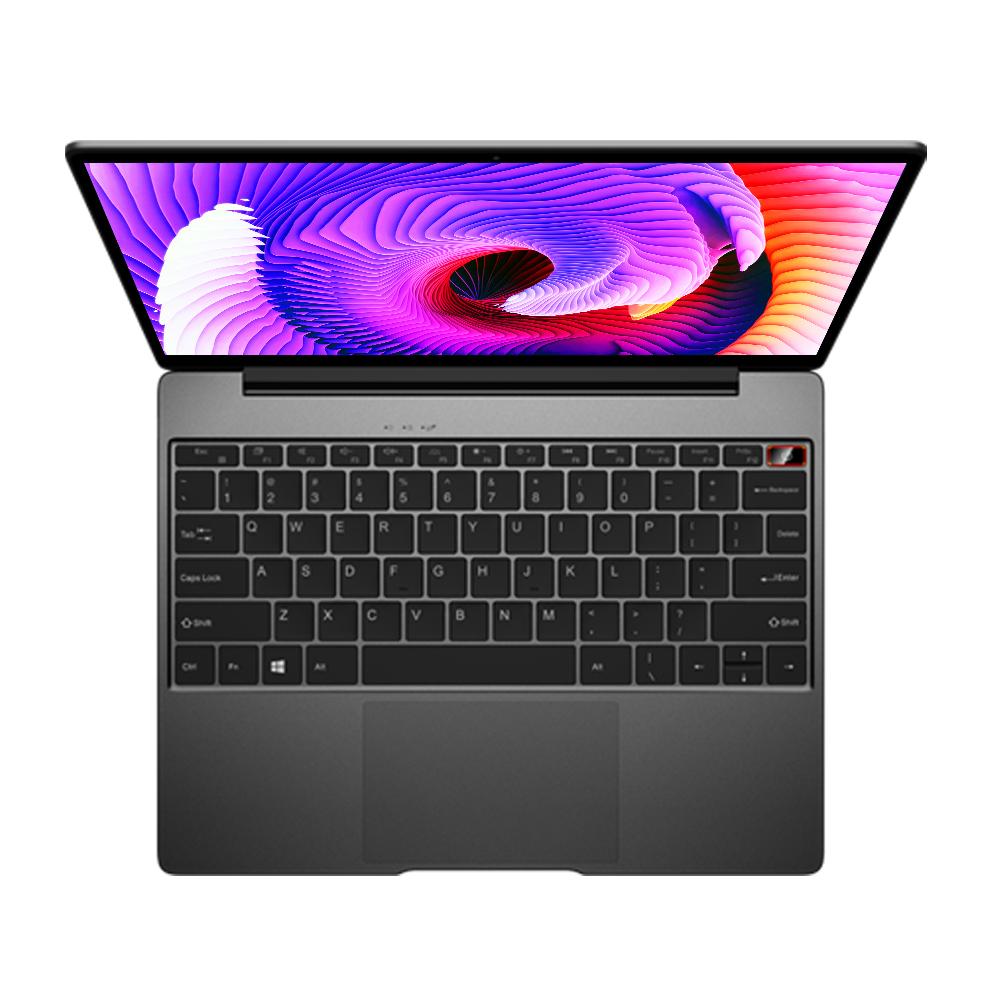Chuwi CoreBook Serie
 Prozessor: AMD Cezanne (Zen 3, Ryzen 5000) R5 7430U, Intel Alder Lake-M i5-1235U, Intel Alder Lake-P i5-12450H, Intel Coffee Lake i5-8259U, Intel Core i3 6157U, Intel Kaby Lake m3-7Y30
Prozessor: AMD Cezanne (Zen 3, Ryzen 5000) R5 7430U, Intel Alder Lake-M i5-1235U, Intel Alder Lake-P i5-12450H, Intel Coffee Lake i5-8259U, Intel Core i3 6157U, Intel Kaby Lake m3-7Y30Grafikkarte: AMD Vega 7, Intel HD Graphics 615, Intel Iris Graphics 550, Intel Iris Plus Graphics 655, Intel Iris Xe G7 80EUs, Intel UHD Graphics Xe G4 48EUs
Bildschirm: 13.30 Zoll, 14.00 Zoll, 15.60 Zoll
Gewicht: 1.05kg, 1.34kg, 1.36kg, 1.385kg, 1.495kg, 1.7kg, 1.811kg
Preis: 399, 540, 559, 600 Euro
Durchschnitt von 10 Bewertungen (aus 30 Tests)
Chuwi CoreBook 13
Ausstattung / Datenblatt
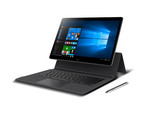 Notebook: Chuwi CoreBook 13
Notebook: Chuwi CoreBook 13Prozessor: Intel Kaby Lake m3-7Y30
Grafikkarte: Intel HD Graphics 615
Bildschirm: 13.30 Zoll, 16:9, 1920 x 1080 Pixel
Gewicht: 1.05kg
Preis: 600 Euro
Links: Chuwi Startseite
Preisvergleich
Ausländische Testberichte
Quelle: Igeekphone
 EN→DE Archive.org version
EN→DE Archive.org versionChuwi CoreBook takes 7th generation Intel Core M3 Kaby Lake processor, registered at a maximum frequency of 2.6GHz, no doubt with windows 10 OS along with 8GB of RAM on board ensures fluid performance in addition to 128GB eMMC 5.1 storage too. Resumed by Intel HD Graphics 615, it supports 4K videos and 3D games. In general, with the specifications mentioned on board, you should not find any inconvenience with the performance of the tablet. Kindly note that CHUWI is now offering super early bird price on the CoreBook campaign. You can get a CoreBook tablet at a price of $399, and if you want the package with the keyboard and the Pen, you will have to pay $430. Back your CoreBook at.
Einzeltest, online verfügbar, Kurz, Datum: 20.12.2017
Chuwi CoreBook X
Ausstattung / Datenblatt
 Notebook: Chuwi CoreBook X
Notebook: Chuwi CoreBook XProzessor: Intel Coffee Lake i5-8259U
Grafikkarte: Intel Iris Plus Graphics 655
Bildschirm: 14.00 Zoll, 3:2, 2160 x 1440 Pixel
Gewicht: 1.495kg
Preis: 540 Euro
Links: Chuwi Startseite
Preisvergleich
Testberichte
Das CoreBook X ist eine gute Lösung für alle, die für einen günstigen Preis ein Maximum an Displayqualität und Farben wünschen. Dennoch gibt es eine Reihe von kleineren Details, die Käufer beachten sollten.
Ausländische Testberichte
Quelle: TechTablets
 Archive.org version
Archive.org versionEinzeltest, online verfügbar, Sehr Lang, Datum: 24.05.2021
Quelle: TechTablets
 Archive.org version
Archive.org versionEinzeltest, online verfügbar, Sehr Lang, Datum: 24.05.2021
Quelle: Mi Mundo Gadget
 ES→DE Archive.org version
ES→DE Archive.org versionPositive: Elegant design; compact size; light weight; nice display; decent processor; fast charging. Negative: No Thunderbolt port; no fingerprint sensor.
Einzeltest, online verfügbar, Mittel, Datum: 03.10.2021
Quelle: Mi Mundo Gadget
 ES→DE Archive.org version
ES→DE Archive.org versionPositive: Elegant design; compact size; light weight; nice display; decent processor; fast charging. Negative: No Thunderbolt port; no fingerprint sensor.
Einzeltest, online verfügbar, Mittel, Datum: 03.10.2021
Chuwi CoreBook Pro 13
Ausstattung / Datenblatt
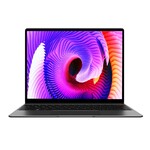 Notebook: Chuwi CoreBook Pro 13
Notebook: Chuwi CoreBook Pro 13Prozessor: Intel Core i3 6157U
Grafikkarte: Intel Iris Graphics 550
Bildschirm: 13.30 Zoll, 3:2, 2160 x 1440 Pixel
Gewicht: 1.34kg
Links: Chuwi Startseite
Preisvergleich
Ausländische Testberichte
Quelle: TechTablets
 Archive.org version
Archive.org versionEinzeltest, online verfügbar, Sehr Lang, Datum: 20.03.2021
Quelle: Pplware
 PT→DE Archive.org version
PT→DE Archive.org versionPositive: Compact size; light weight; good price; great built quality; nice display.
Einzeltest, online verfügbar, Lang, Datum: 21.05.2021
Chuwi CoreBook X Pro
Ausstattung / Datenblatt
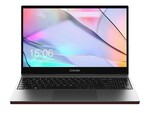 Notebook: Chuwi CoreBook X Pro
Notebook: Chuwi CoreBook X ProProzessor: Intel Coffee Lake i5-8259U
Grafikkarte: Intel Iris Plus Graphics 655
Bildschirm: 15.60 Zoll, 16:9, 1920 x 1080 Pixel
Gewicht: 1.811kg
Preis: 559 Euro
Links: Chuwi Startseite
Preisvergleich
Bewertung:
Testberichte
The CoreBook X Pro is the least expensive 15.6-inch laptop you can find with a 120 Hz panel. The catch, however, is you'll have to deal with substantial cut corners to major aspects of the system.
Ausländische Testberichte
Quelle: Hubwood

Einzeltest, online verfügbar, Sehr Lang, Datum: 16.12.2023
Quelle: Make Use Of
 EN→DE Archive.org version
EN→DE Archive.org versionChuwi's design team built a laptop that successfully competes with large manufacturers. Unfortunately, the lack of a dedicated graphics card means its 120Hz display won't live up to its potential for gaming. But none of that is terrible, given its price. Unfortunately, what is terrible is that Chuwi requires you to pay ship-in costs to China on returns. But if you can stomach its warranty, Chuwi's CoreBook is the best laptop under $500 for productivity and for video playback. However, there are laptops for $750 and 800 which also have 120Hz displays and a discrete graphics card, which I would advise buying instead if it's within your budget.
Einzeltest, online verfügbar, Lang, Datum: 30.11.2021
Bewertung: Gesamt: 79%
Quelle: Awaqua
 EN→DE Archive.org version
EN→DE Archive.org versionAfter one week of testing the new model of the Chuwi Corebook X Pro gaming laptop, I was left with both positive and negative emotions. Of the advantages, the device stands out for the presence of good materials used. Also, the laptop case was well assembled and executed. In addition, I liked the performance of the processor, both in real life and in synthetic tests. You can also easily install additional RAM and built-in memory in the device. The backlit keyboard will definitely not be a superfluous feature, as well as the presence of a full-fledged SD card slot. I also liked the battery life with a good 70 Wh of capacity and fast charging. But the main disadvantage for me was the screen, since the color gamut was not the best in its class. Other than that, I didn’t really like the maximum screen brightness of 230 nits. The device also made a little noise under heavy loads and tasks. At the same time, the quality of sound and webcam did not have the best indicators.
Einzeltest, online verfügbar, Sehr Lang, Datum: 24.09.2021
Quelle: TechTablets
 Archive.org version
Archive.org versionChuwi Corebook XPro unboxing and review. 15.6" 144hz IPS, Core i5 8259U laptop with upgradable RAM and empty SATA3 SSD slot. 8GB DDR 2400Mhz with 512GB Kingston NVMe drive.
Einzeltest, online verfügbar, Sehr Lang, Datum: 10.09.2021
Chuwi Corebook X 2023
Ausstattung / Datenblatt
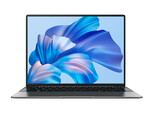 Notebook: Chuwi Corebook X 2023
Notebook: Chuwi Corebook X 2023Prozessor: Intel Alder Lake-M i5-1235U
Grafikkarte: Intel Iris Xe G7 80EUs
Bildschirm: 14.00 Zoll, 3:2, 2160 x 1440 Pixel
Gewicht: 1.36kg
Links: Chuwi Startseite
Preisvergleich
Bewertung:
Ausländische Testberichte
Quelle: Techradar
 EN→DE
EN→DEThis platform appears to have been stymied by Intel before it was even made. With no USB 3.2 ports or Thunderbolt ports and poor battery life, I have difficulty recommending this for frontline use.
Einzeltest, online verfügbar, Lang, Datum: 17.02.2025
Bewertung: Gesamt: 60% Preis: 60% Leistung: 50% Ausstattung: 50% Gehäuse: 60%
Quelle: Igeekphone
 EN→DE
EN→DEReturning to the initial question – is the Chuwi Corebook X a worthwhile upgrade over the Corebook Pro? Priced at just $400, the Pro competes favorably with Chromebooks and some Windows notebooks at its configuration level, making it one of the best laptops in its price range. However, at $500, the Corebook X faces stiffer competition. Does the improved CPU and extra RAM justify the higher cost? In essence, the Corebook X remains an excellent purchase at $500, offering performance on par or superior to the competition, especially in aspects like display quality and typing experience.
Einzeltest, online verfügbar, Mittel, Datum: 09.12.2023
Chuwi Corebook X Pro i5-12450H
Ausstattung / Datenblatt
 Notebook: Chuwi Corebook X Pro i5-12450H
Notebook: Chuwi Corebook X Pro i5-12450HProzessor: Intel Alder Lake-P i5-12450H
Grafikkarte: Intel UHD Graphics Xe G4 48EUs
Bildschirm: 15.60 Zoll, 16:9, 1920 x 1080 Pixel
Gewicht: 1.7kg
Links: Chuwi Startseite
Preisvergleich
Ausländische Testberichte
Quelle: El chapuzas Informatico
 ES→DE
ES→DEPositive: Excellent price/performance ratio; elegant design; nice display; powerful processor; decent connectivity.
Einzeltest, online verfügbar, Sehr Lang, Datum: 24.02.2025
Quelle: HKEPC
 zh-TW→DE
zh-TW→DEPositive: Good price; decent hardware; big screen; easy to upgrade; elegant design. Negative: Average performance; no GPU; overheats while using.
Einzeltest, online verfügbar, Lang, Datum: 19.09.2024
Chuwi CoreBook X, i5-12450H
Ausstattung / Datenblatt
 Notebook: Chuwi CoreBook X, i5-12450H
Notebook: Chuwi CoreBook X, i5-12450HProzessor: Intel Alder Lake-P i5-12450H
Grafikkarte: Intel UHD Graphics Xe G4 48EUs
Bildschirm: 14.00 Zoll, 3:2, 2160 x 1440 Pixel
Gewicht: 1.36kg
Links: Chuwi Startseite
Preisvergleich
Bewertung:
Ausländische Testberichte
Quelle: Yugatech
 EN→DE
EN→DEOverall, the Chuwi Corebook X is a great work laptop if you are looking for something on a budget. It can easily run your productivity apps and more. While you can’t exactly play a lot of games, it can handle some of the lighter titles. The only thing you will have to worry about is the battery life. For most productivity laptops of this size, you’ll typically have around 7-8 hours of battery at your disposal. As for the Corebook X, it’s only half of that. Still, this laptop is something you can consider if you just want a laptop for getting work done on a budget. After all, the Corebook X with the AMD Ryzen 5 CPU retails for just PHP 25,990. It’s one of the most affordable 14-inch laptops on the market with a relatively new chipset. If you find the performance lacking, there is a variant powered by an Intel Core i9-13900HK available. However, that’s a lot more expensive, retailing at over PHP 40,000, and for a different review altogether.
Einzeltest, online verfügbar, Lang, Datum: 27.09.2025
Quelle: Geektopia
 ES→DE
ES→DEEinzeltest, online verfügbar, Sehr Lang, Datum: 30.03.2025
Bewertung: Gesamt: 80%
Quelle: 4G News
 PT→DE
PT→DEEinzeltest, online verfügbar, Mittel, Datum: 04.05.2025
Bewertung: Gesamt: 90%
Quelle: Android Geek
 PT→DE
PT→DEEinzeltest, online verfügbar, Mittel, Datum: 15.04.2025
Bewertung: Gesamt: 83% Preis: 100% Leistung: 80% Bildschirm: 90% Mobilität: 70% Ergonomie: 70%
Quelle: Pplware
 PT→DE
PT→DEPositive: Good price; decent hardware; easy to upgrade RAM; beautiful display. Negative: Short battery life; average gaming performance.
Einzeltest, online verfügbar, Mittel, Datum: 17.06.2025
Chuwi CoreBook X
Ausstattung / Datenblatt
 Notebook: Chuwi CoreBook X
Notebook: Chuwi CoreBook XProzessor: AMD Cezanne (Zen 3, Ryzen 5000) R5 7430U
Grafikkarte: AMD Vega 7
Bildschirm: 14.00 Zoll, 3:2, 2160 x 1440 Pixel
Gewicht: 1.385kg
Preis: 399 Euro
Links: Chuwi Startseite
Preisvergleich
Bewertung:
Testberichte
Das Chuwi CoreBook X mit AMD Ryzen 5 7430U richtet sich an Nutzer, die ein zuverlässiges Notebook für Büro, Studium und alltägliche Anwendungen suchen – und das zu einem fairen Preis. Doch wie gut schlägt sich das kompakte 14-Zoll-Gerät im praktischen Einsatz? In unserem Test prüfen wir Ausstattung, Leistung und Alltagstauglichkeit genauer.
Ausländische Testberichte
Quelle: Yugatech

Einzeltest, online verfügbar, Lang, Datum: 30.09.2025
Quelle: Yugatech

Einzeltest, online verfügbar, Lang, Datum: 30.09.2025
Quelle: El chapuzas Informatico
 ES→DE
ES→DEEinzeltest, online verfügbar, Sehr Lang, Datum: 03.09.2025
Quelle: El chapuzas Informatico
 ES→DE
ES→DEEinzeltest, online verfügbar, Sehr Lang, Datum: 03.09.2025
Quelle: Geektopia
 ES→DE
ES→DEEinzeltest, online verfügbar, Sehr Lang, Datum: 02.09.2025
Bewertung: Gesamt: 80%
Quelle: Geektopia
 ES→DE
ES→DEEinzeltest, online verfügbar, Sehr Lang, Datum: 02.09.2025
Bewertung: Gesamt: 80%
Quelle: Pplware
 PT→DE
PT→DEEinzeltest, online verfügbar, Mittel, Datum: 15.11.2025
Quelle: Pplware
 PT→DE
PT→DEEinzeltest, online verfügbar, Mittel, Datum: 15.11.2025
Quelle: Napidroid
 HU→DE
HU→DEEinzeltest, online verfügbar, Mittel, Datum: 29.11.2025
Quelle: Napidroid
 HU→DE
HU→DEEinzeltest, online verfügbar, Mittel, Datum: 29.11.2025
Kommentar
Chuwi: Chuwi ist ein chinesisches Unternehmen, das sich auf die Herstellung von Tablets, Laptops und anderen Elektronikprodukten spezialisiert hat. Das Unternehmen wurde 2004 gegründet und hat seinen Hauptsitz in Shenzhen, China.
Chuwi hat eine starke Präsenz in der Gaming-Community, da es eine breite Palette von Gaming-Laptops und -Tablets anbietet. Diese Produkte bieten Funktionen wie leistungsstarke Prozessoren, dedizierte Grafikkarten und schnelle Speicherlösungen. Chuwi hat sich auch auf die Entwicklung von 2-in-1-Geräten spezialisiert, die eine Kombination aus Tablet und Laptop darstellen. Diese Geräte bieten eine hohe Portabilität und Flexibilität und sind ideal für den Einsatz unterwegs oder in der Schule oder im Büro.
Einige nicht anspruchsvolle aktuelle Spiele können mit geringen Details noch flüssig gespielt werden. Für Office und Video natürlich ausreichende Leistungsreserven.
Intel HD Graphics 615: Integrierte Grafikkarte (GT2-Ausbau, 24 EUs), welche in einigen Kaby-Lake-CPUs der Y-Serie (4,5 Watt TDP) verbaut wird.
Diese Klasse ist noch durchaus fähig neueste Spiele flüssig darzustellen, nur nicht mehr mit allen Details und in hohen Auflösungen. Besonders anspruchsvolle Spiele laufen nur in minimalen Detailstufen, wodurch die grafische Qualität oft deutlich leidet. Diese Klasse ist nur noch für Gelegenheitsspieler empfehlenswert. Der Stromverbrauch von modernen Grafikkarten in dieser Klasse ist dafür geringer und erlaubt auch bessere Akkulaufzeiten.
Intel Iris Plus Graphics 655: Integrierte Grafikkarte (GT3e), welche in einigen Coffee-Lake-U-CPUs (28-Watt-Klasse) verbaut wird.
Intel Iris Graphics 550: Integrierte Grafikkarte (GT3e), welche in einigen Skylake-CPUs (28-Watt-Klasse) verbaut wird.
Intel Iris Xe G7 80EUs: Integrierte Grafikkarte (in Tiger-Lake G4 SoCs) der Gen. 12 Architektur mit 80 EUs. Z.B. in Tiger Lake i5 CPUs verbaute iGPU.
Intel UHD Graphics Xe G4 48EUs: Integrierte Grafikkarte (in Tiger-Lake G1 SoCs) der Gen. 12 Architektur mit 48 EUs. Z.B. in Tiger Lake i3 CPUs verbaute iGPU.
AMD Vega 7: Integrierte Grafikkarte in the Ryzen APUs basierend auf der Vega Architektur mit 7 CUs (= 448 Shader) und einer Taktrate von bis zu 1600 MHz.
» Weitere Informationen gibt es in unserem Notebook-Grafikkartenvergleich und der Benchmarkliste.
Intel Kaby Lake:
m3-7Y30: Auf der Kaby-Lake-Architektur basierender, extrem sparsamer ULV-SoC (System-on-a-Chip) für Tablets und lüfterlose Notebooks. Integriert unter anderem zwei CPU-Kerne mit 1,0 - 2,6 GHz Taktrate und HyperThreading sowie eine Grafikeinheit und wird in 14-Nanometer-Technik gefertigt.
Intel Coffee Lake:
i5-8259U: Auf der Coffee-Lake-Architektur basierender SoC (System-on-a-Chip) für mittelgroße Notebooks. Integriert unter anderem vier CPU-Kerne mit 2,3 GHz Basisfrequenz (max. Turbo Boost 3,8 GHz), eine Iris Plus Graphics 655 Grafikeinheit mit 300 - 1050 MHz (langsamste Iris 655) sowie 128 MB eDRAM-Cache und wird in 14-Nanometer-Technik gefertigt. Die TDP liegt bei 28 Watt und damit deutlich über den 15 Watt für normale ULV-Prozessoren.
Intel Core i3:
6157U: Auf der Skylake-Architektur basierender Dual-Core-Prozessor für Notebooks. Integriert neben den beiden CPU-Kernen auch eine Iris Graphics 550 Grafikeinheit mit eDRAM-Cache und wird in 14-Nanometer-Technik gefertigt. Taktet fix mit 2,4 GHz (kein Turbo), kann aber auf die 64 MB eDRAM der GPU zugreifen (als L4 Cache).
Intel Alder Lake-M:
i5-1235U: Auf der Alder-Lake-Architektur basierender High-End Mobilprozessor. Bietet 2 Performance-Kerne und 8 Effizienzkerne und kann 12 Threads gleichzeitig bearbeiten. Der maximale Turbo-Takt der P-Kerne beträgt 4,4 GHz.
Intel Alder Lake-P:
i5-12450H: Auf der Alder-Lake-Architektur basierender High-End Mobilprozessor. Bietet 4 Performance-Kerne und 4 Effizienzkerne und kann 12 Threads gleichzeitig bearbeiten. Der maximale Turbo-Takt der P-Kerne beträgt 4,4 GHz.
AMD Cezanne (Zen 3, Ryzen 5000):
R5 7430U: Mobile APU mit sechs Zen 3 basierten Kernen welche mit 2,3 bis 4,3 GHz takten. Integriert eine Vega Grafikkarte mit 7 CUs und maximal 1800 MHz. Technisch identisch zum älteren Ryzen 5 5625U.
» Weitere Infos gibt es in unserem Prozessorvergleich Vergleich mobiler Prozessoren und der Prozessoren Benchmarkliste .
14.00:
14 Zoll Display-Grösse stellt ein Mittelding zwischen den kleinen Subnotebook-Formaten und den Bildschirmen der 15 Zoll-Standard-Laptops dar.
Der Grund der Beliebtheit mittelgrosser Displays ist, dass diese Größe einigermaßen augenschonend ist, gute Auflösungen mit brauchbaren Detailgrößen liefern und dennoch nicht allzu viel Strom verbraucht und die Geräte noch halbwegs kompakt sein können.
Früher waren 14 Zoll-Geräte sehr selten, jetzt stellen sie nach den 15-Zollern den Standard bei Laptops dar.
» Prüfen Sie in unserer DPI Liste, welche Displays wie fein aufgelöst sind.
1.05 kg:
Most smartphones and only a few tablets fall into this weight category. Only a few smartphones are heavier and should rather be considered tablets.
1.811 kg:
In this weight range, there are particularly light laptops, convertibles and subnotebooks that are trimmed for good portability.
78.57%: Weltbewegend ist diese Bewertung nicht. Diese Bewertung muss man eigentlich als unterdurchschnittlich ansehen, denn es gibt etwa ebenso mehr Geräte mit schlechtere Beurteilungen als Besseren. Eine Kaufempfehlung kann man nur mit viel Wohlwollen darin sehen, es sei denn es handelt sich um Websites, die generell streng urteilen.
» Lesen Sie auch unsere Notebook-Kaufberatung.


